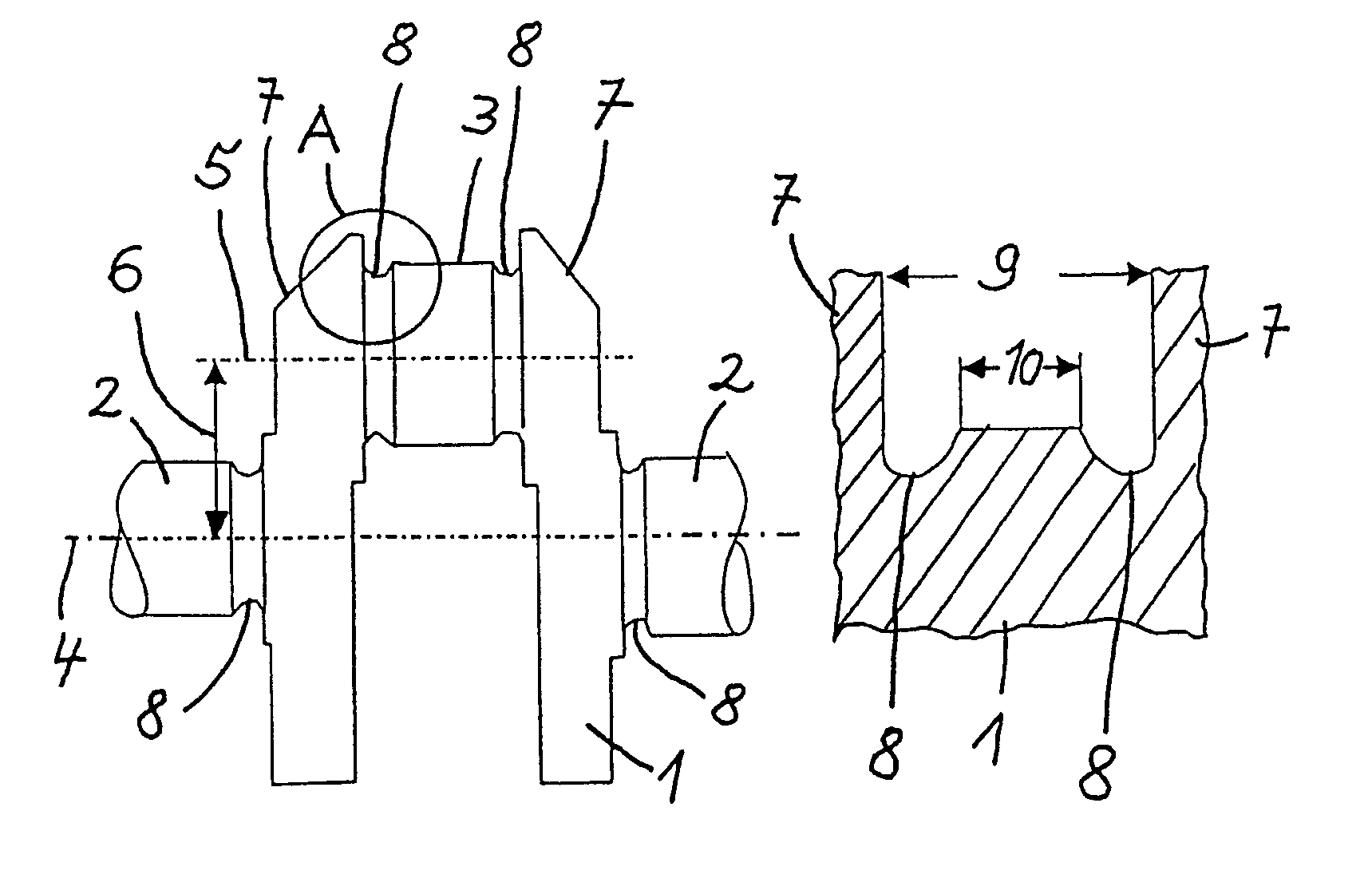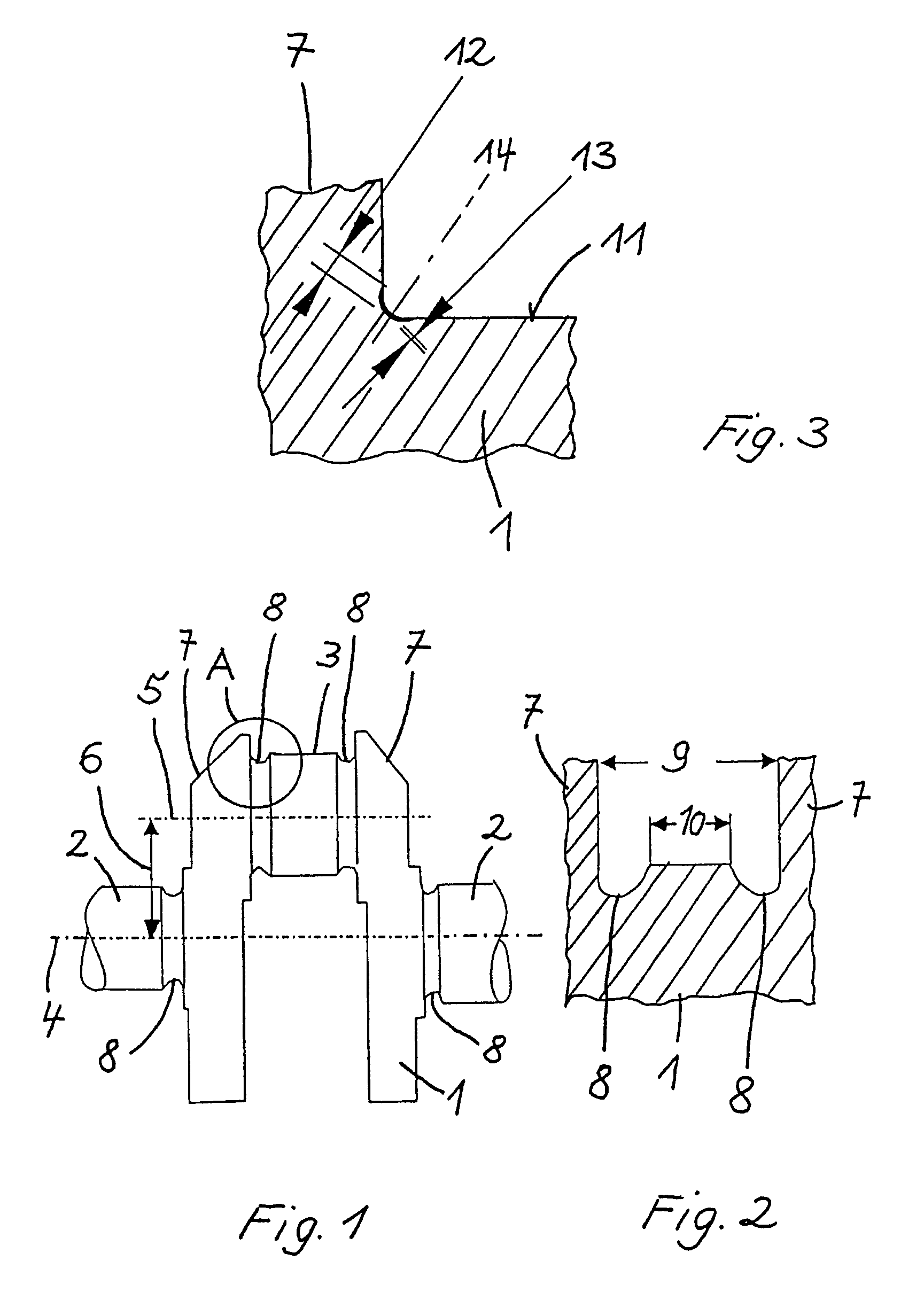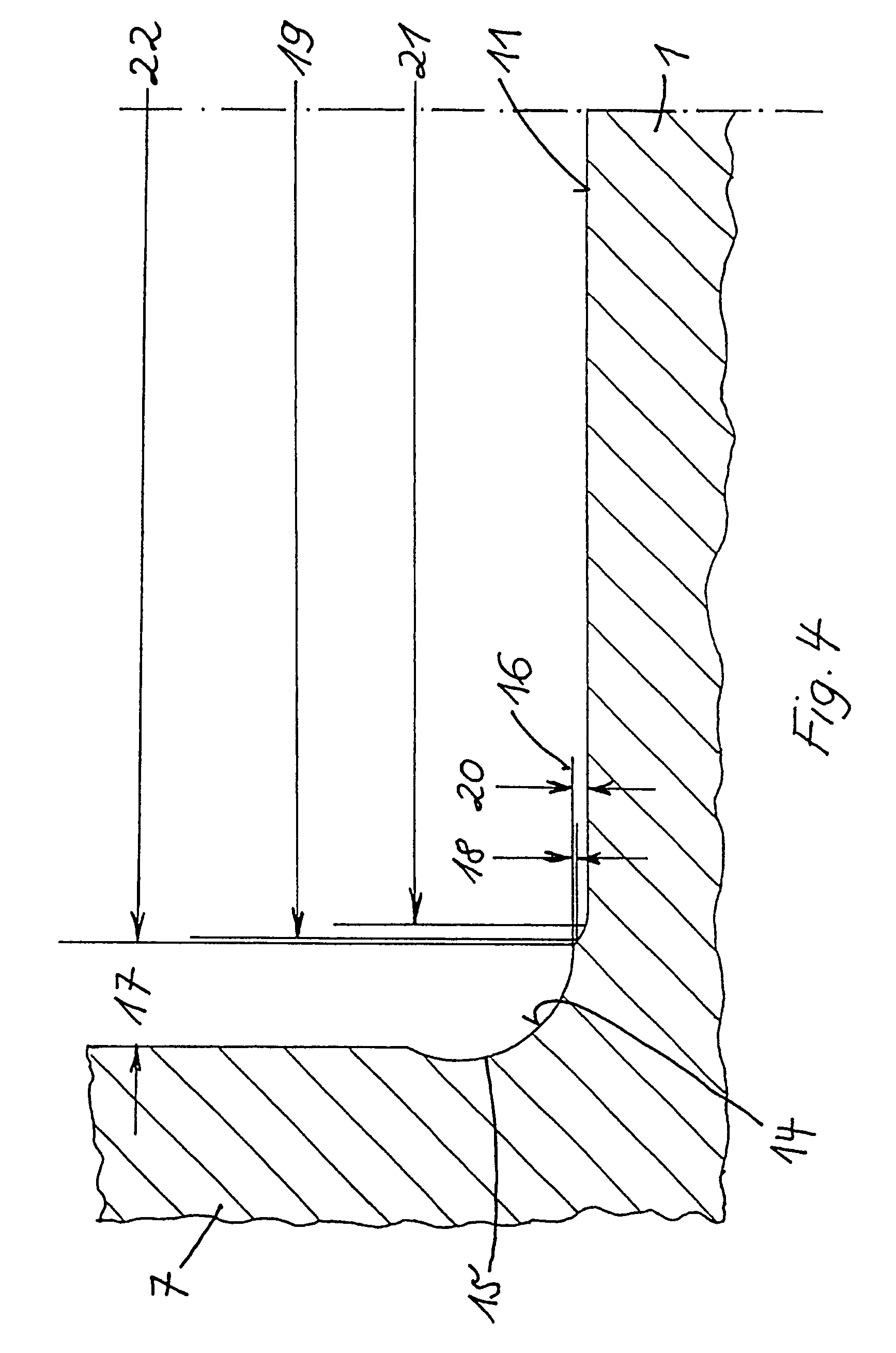Process for finish-machining crank shafts for motor car engines
- Summary
- Abstract
- Description
- Claims
- Application Information
AI Technical Summary
Benefits of technology
Problems solved by technology
Method used
Image
Examples
Embodiment Construction
[0022]The crankshaft 1 has two main bearing journals 2 and a stroke bearing journal 3. The crankshaft 1 is mounted in the engine block (not shown) of a motor car engine so as to rotate about the axis of rotation 4 with the two main bearing journals 2. The axis of rotation 5 of the stroke bearing journal 3 is at a distance 6 from the axis of rotation 4 of the crankshaft 1, this distance corresponding to the stroke. The transitions between the two main bearing journals 2 and the stroke bearing journal 3 are formed by the two cheeks 7. Between the main bearing journals 2, the stroke bearing journal 3, and the individual transitions 7, provision is made in each case for fillets 8. The largest theoretically available bearing width 9 is reduced by the two fillets 8 to the actually available bearing width 10, as can be seen in FIG. 2.
[0023]In accordance with the invention, the bearing position 11, which pertains to a main bearing journal 2 or a stroke bearing journal 3, is deep rolled with...
PUM
| Property | Measurement | Unit |
|---|---|---|
| Radius | aaaaa | aaaaa |
| Radius | aaaaa | aaaaa |
| Depth | aaaaa | aaaaa |
Abstract
Description
Claims
Application Information
 Login to View More
Login to View More - R&D
- Intellectual Property
- Life Sciences
- Materials
- Tech Scout
- Unparalleled Data Quality
- Higher Quality Content
- 60% Fewer Hallucinations
Browse by: Latest US Patents, China's latest patents, Technical Efficacy Thesaurus, Application Domain, Technology Topic, Popular Technical Reports.
© 2025 PatSnap. All rights reserved.Legal|Privacy policy|Modern Slavery Act Transparency Statement|Sitemap|About US| Contact US: help@patsnap.com



